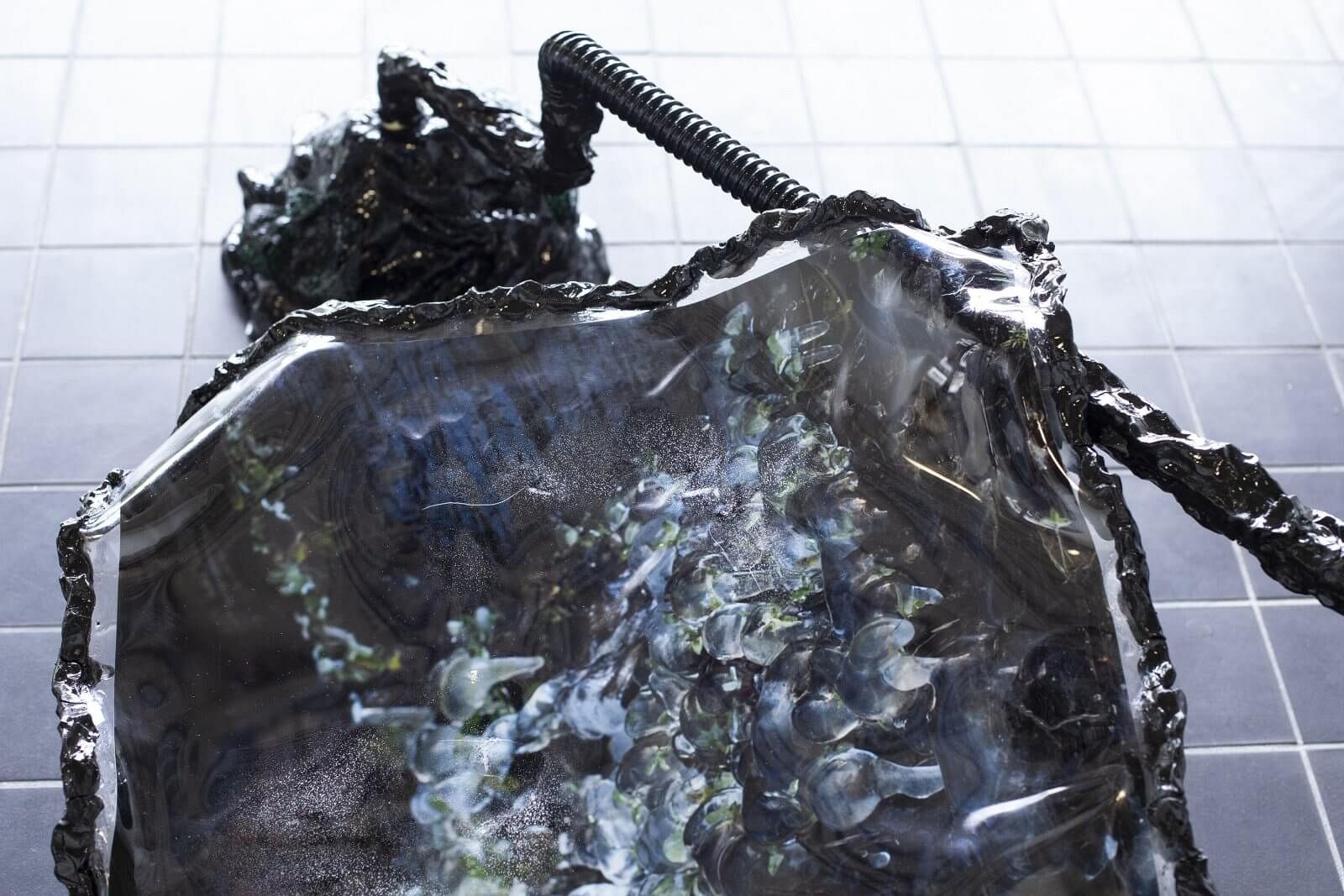
Kert Viiart (1989) is a graphic designer and visual artist from Tallinn, Estonia. In his practice, he deals with the influence of technological development on visual language by researching the relations of virtual representations to everyday objects and environments. Currently, he is analyzing the problematics of a posthumous conditions and the age of plastic, seeking to explore the impact of the use and display of plastic both as a material/tool and as an artifact in the methodologies of archaeology.
GRADUATION PROJECT
Installation
Clay, found pieces of plastic and plastic tubes, second-hand acrylic, epoxy resin, inject prints on coated paper, screen 50”. Dimensions variable
The installation “As It Came Out of the Earth, It Returns” (2020) by Kert Viiart is a work that critically explores plastic as a matter and artefact from an archeological point of view. Throughout his research, Kert explored widely used plastic displays in archeology museums, seeing them as part of the ancient finding rather than a structural support element and questioning the installation policies of museums. Also, he is speculating about the future scenario when plastic merges together with the ancient ruin.
“As It Came Out of the Earth, It Returns” is an installation consisting of 7 sculptural pieces and a video (5’46’’). The work revolves around the contemporary archaeological displays, the plastic-based support structures, and building materials, questioning the choice of materials in use. These hybrid sculptural objects are condensed images of both imagination and material reality, creating multiple possibilities of historical transformation. They have “traveled” through time and deformed, becoming part of the soil and gaining the value and archeological meaning.
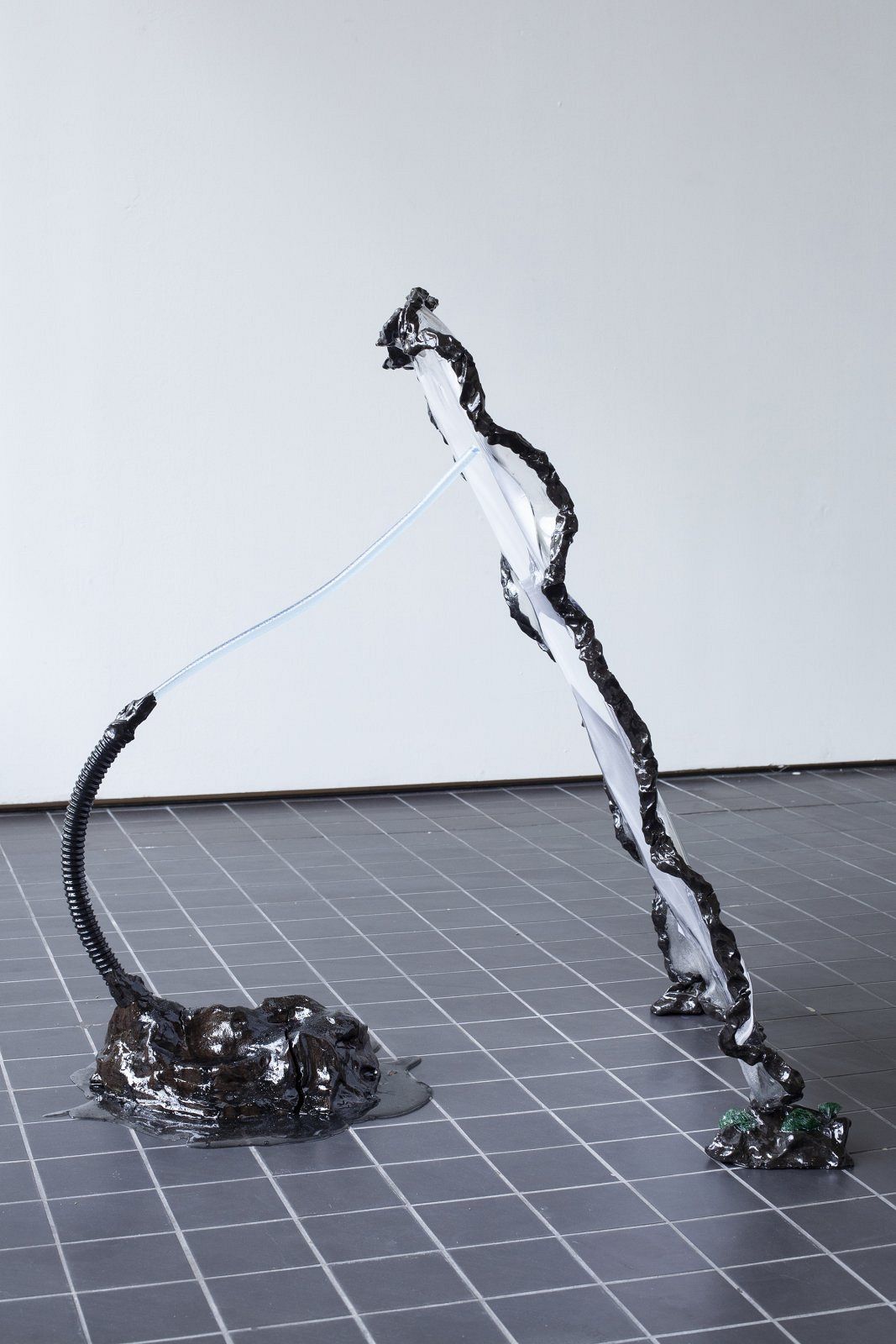

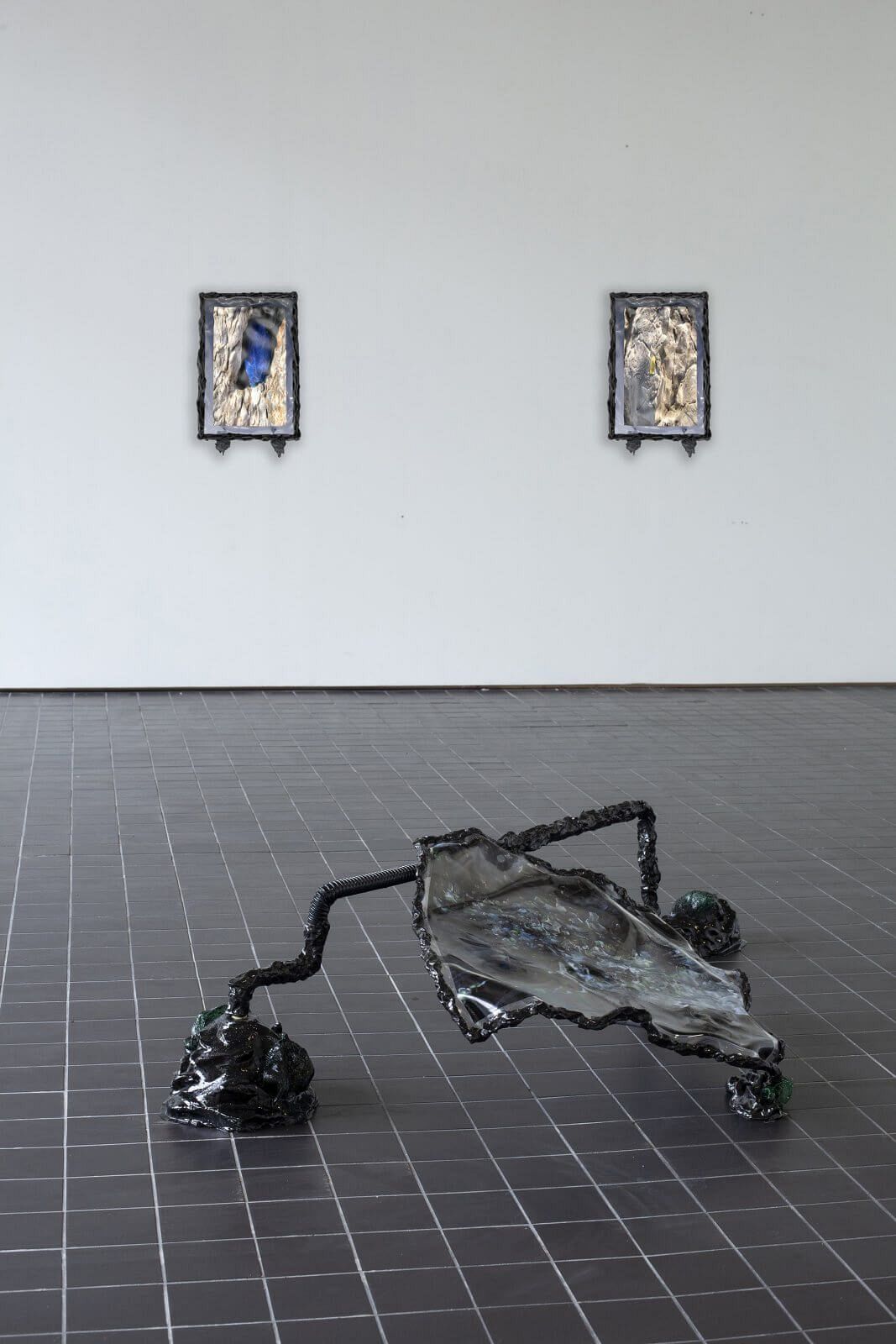
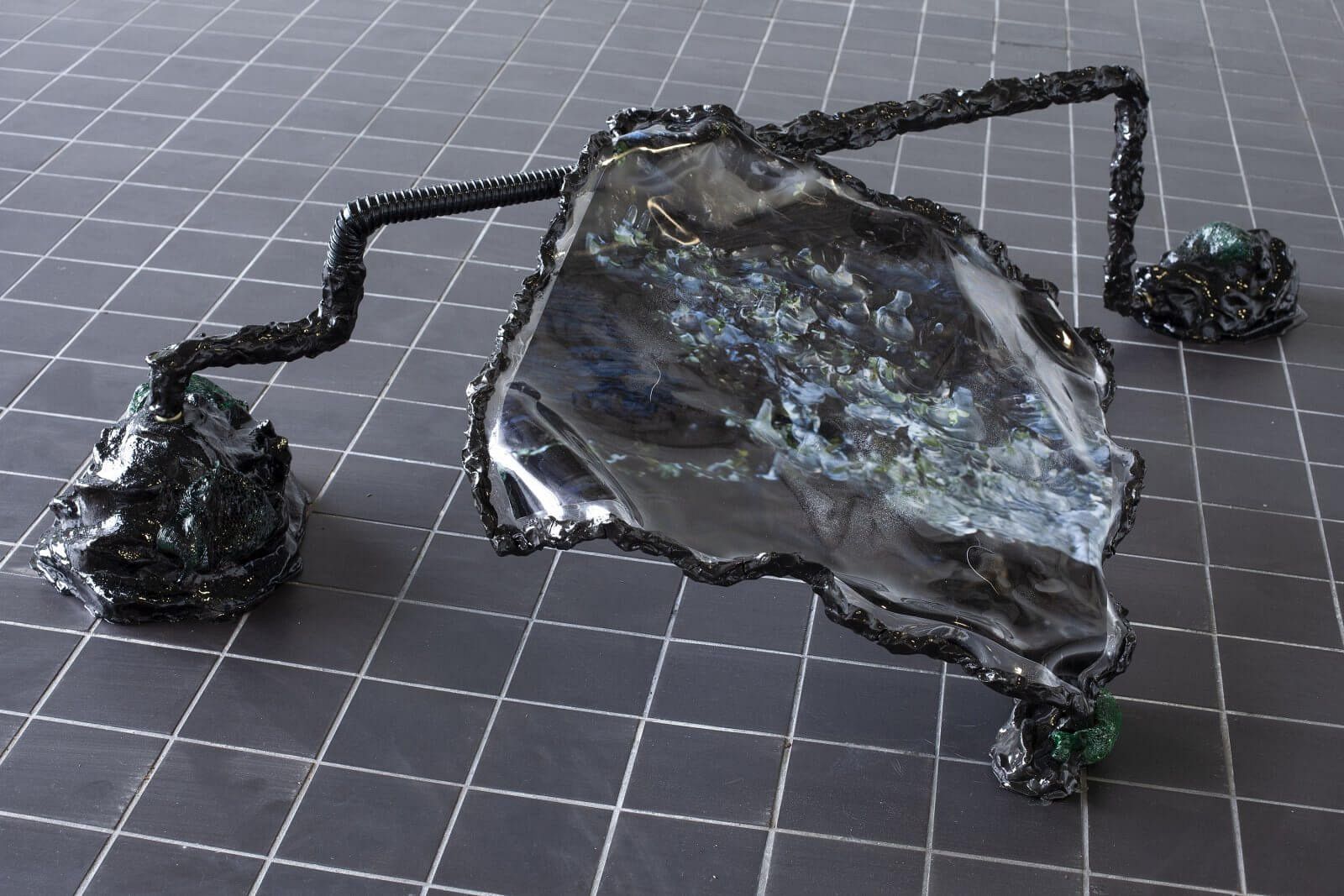
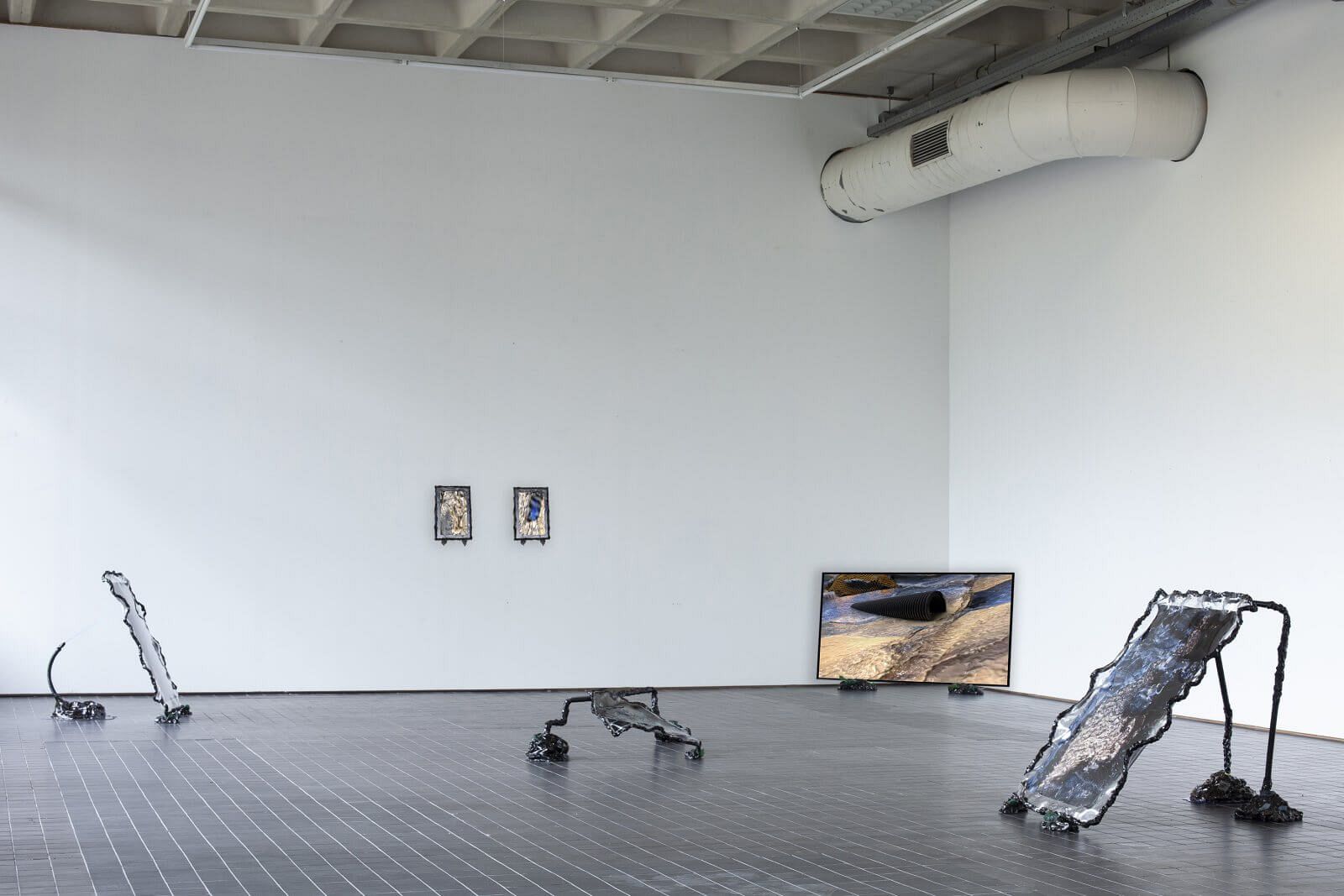
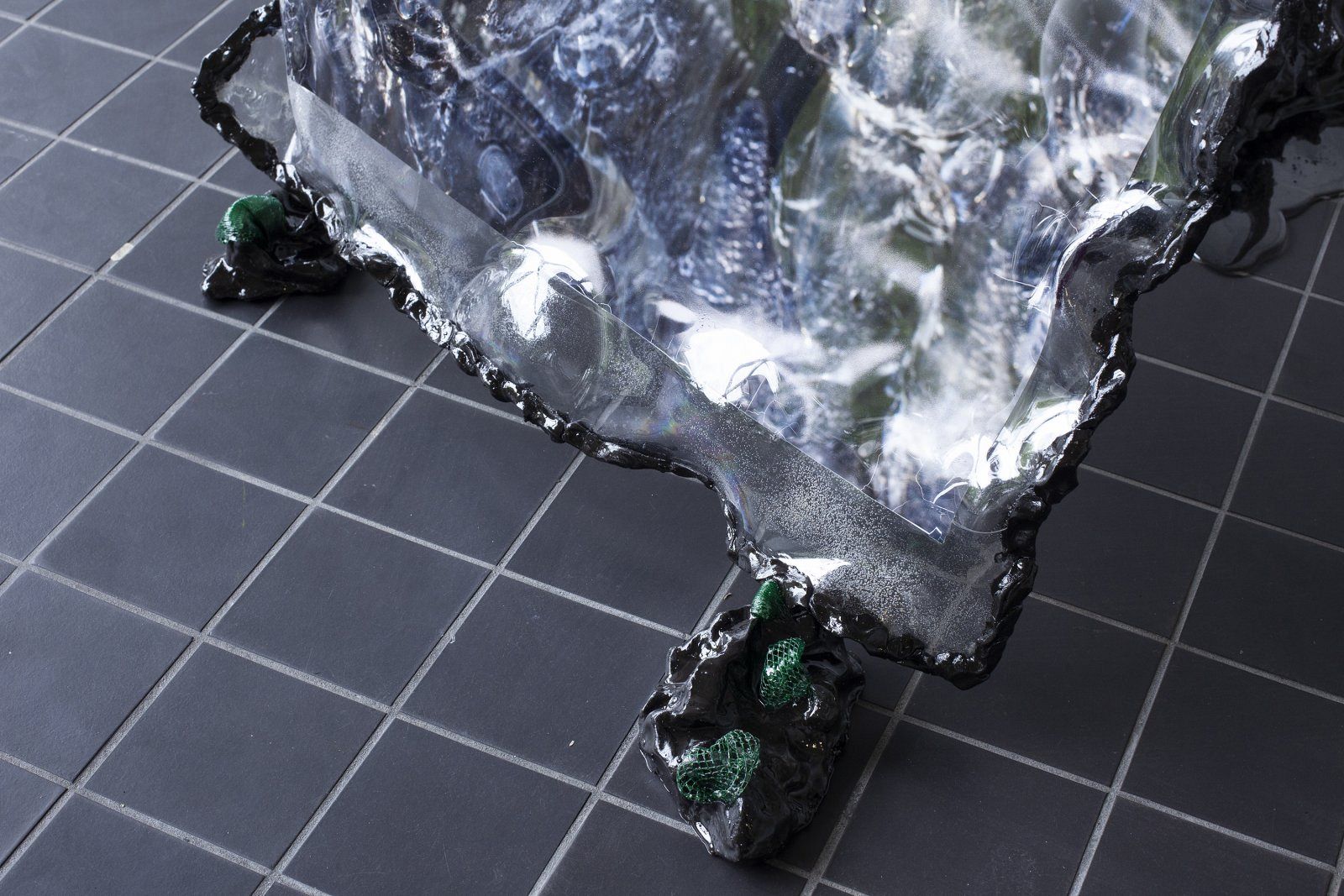
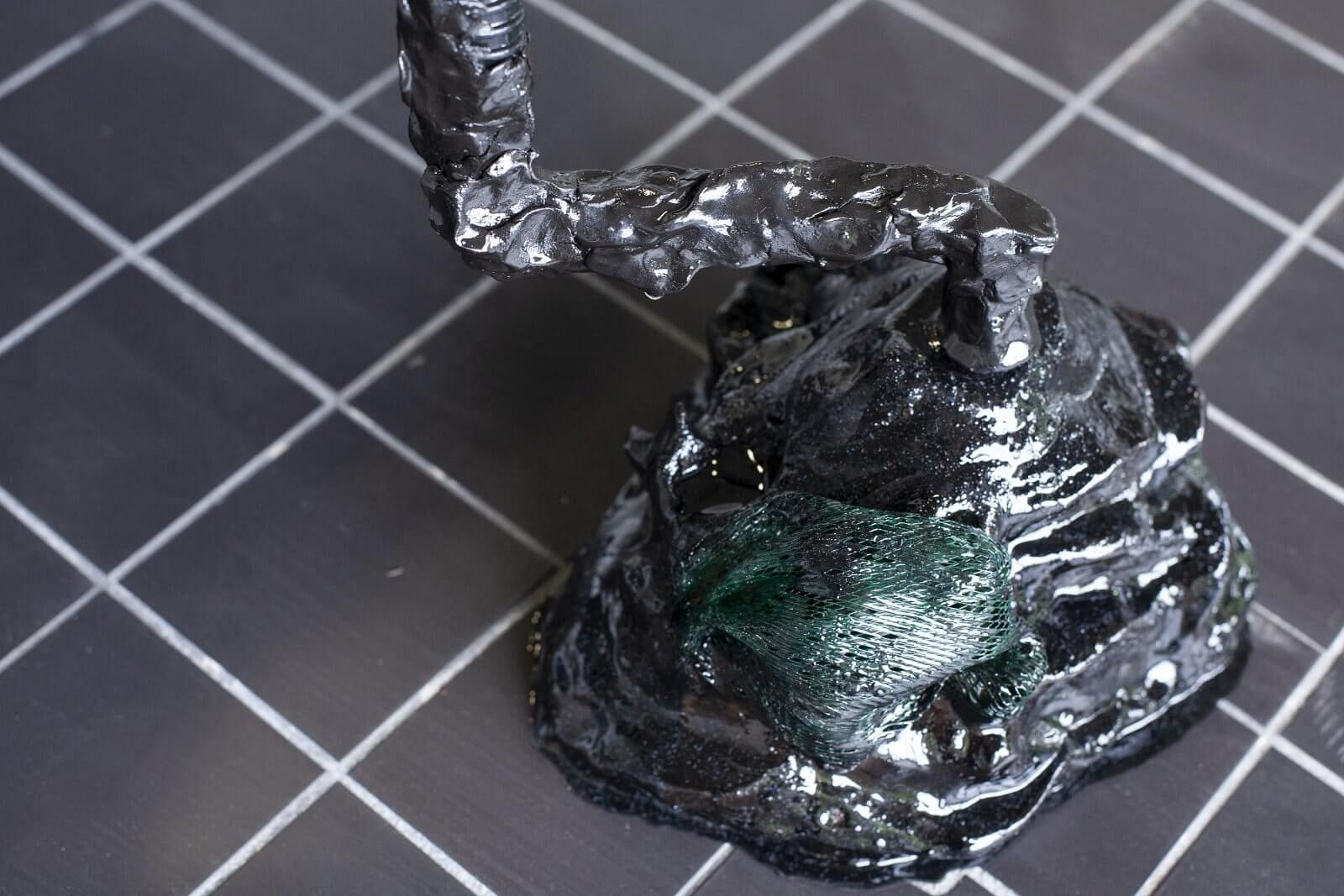

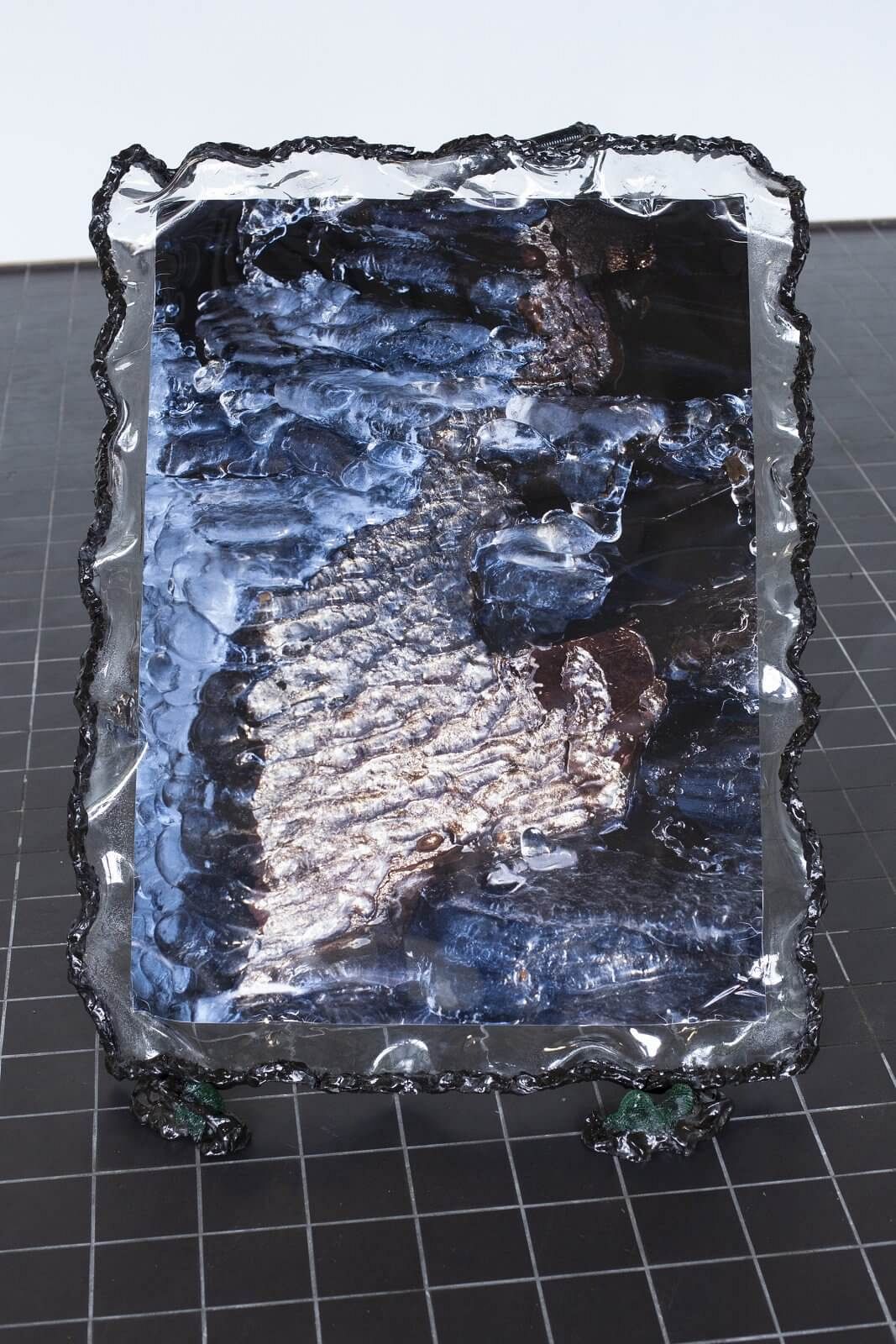
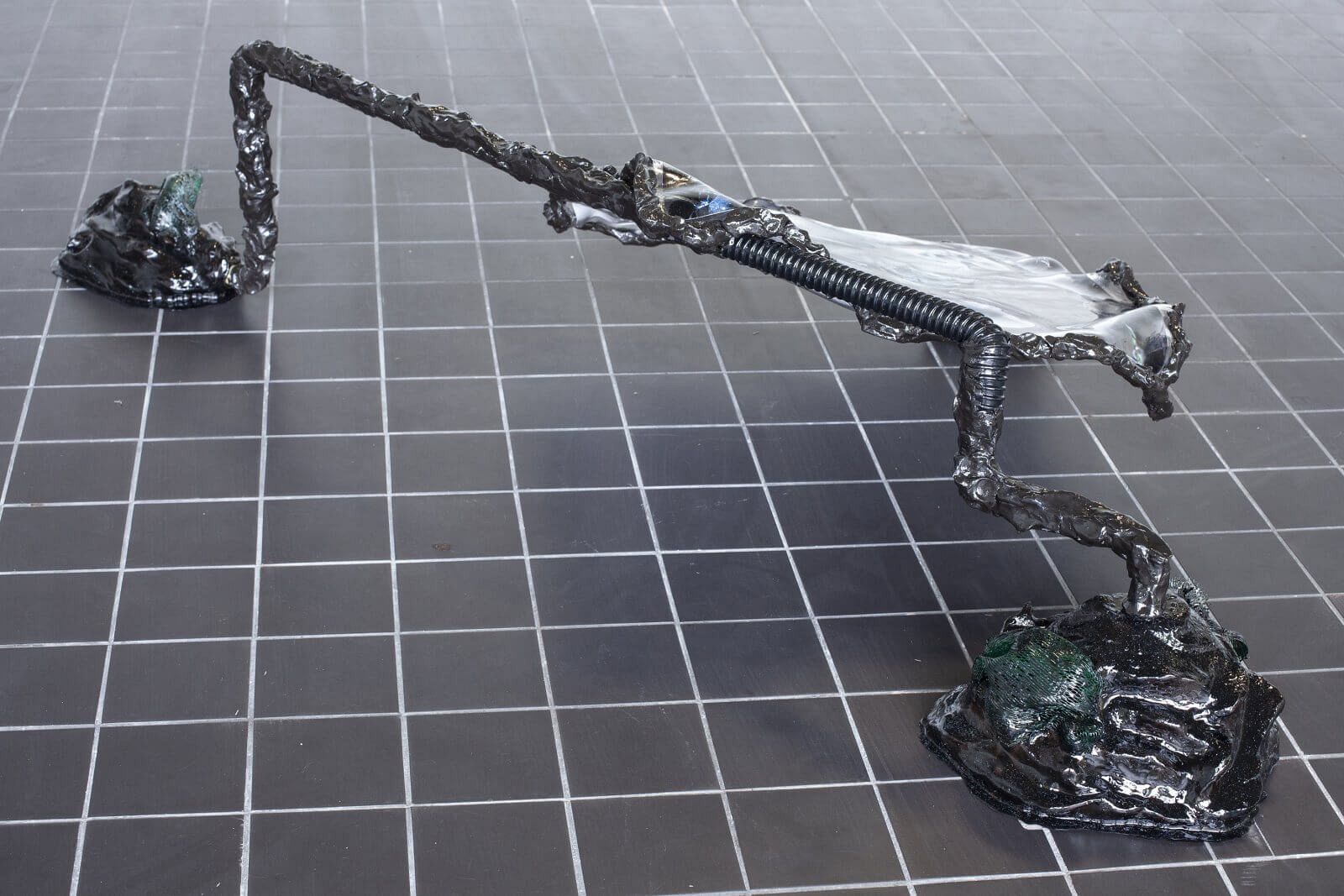
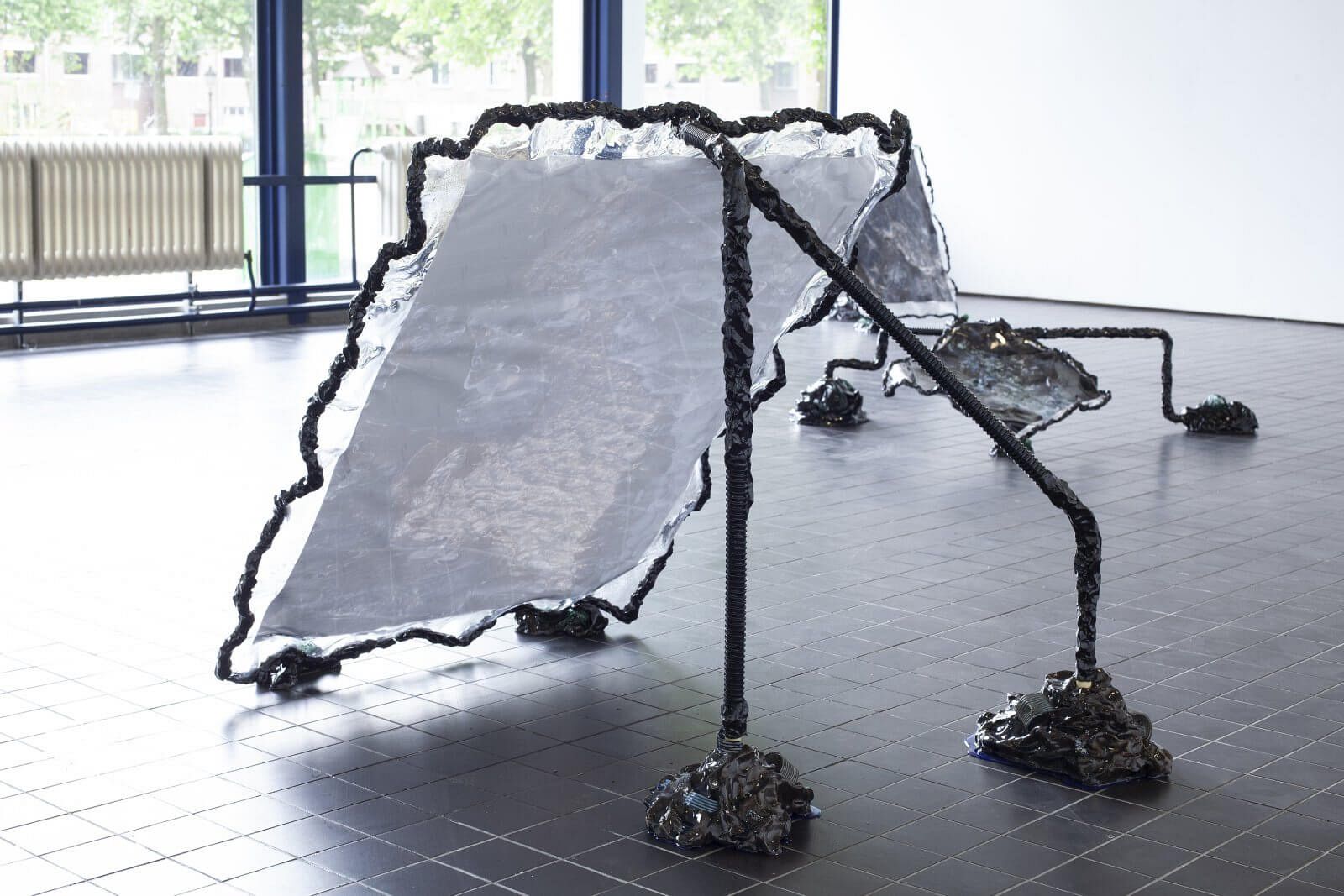
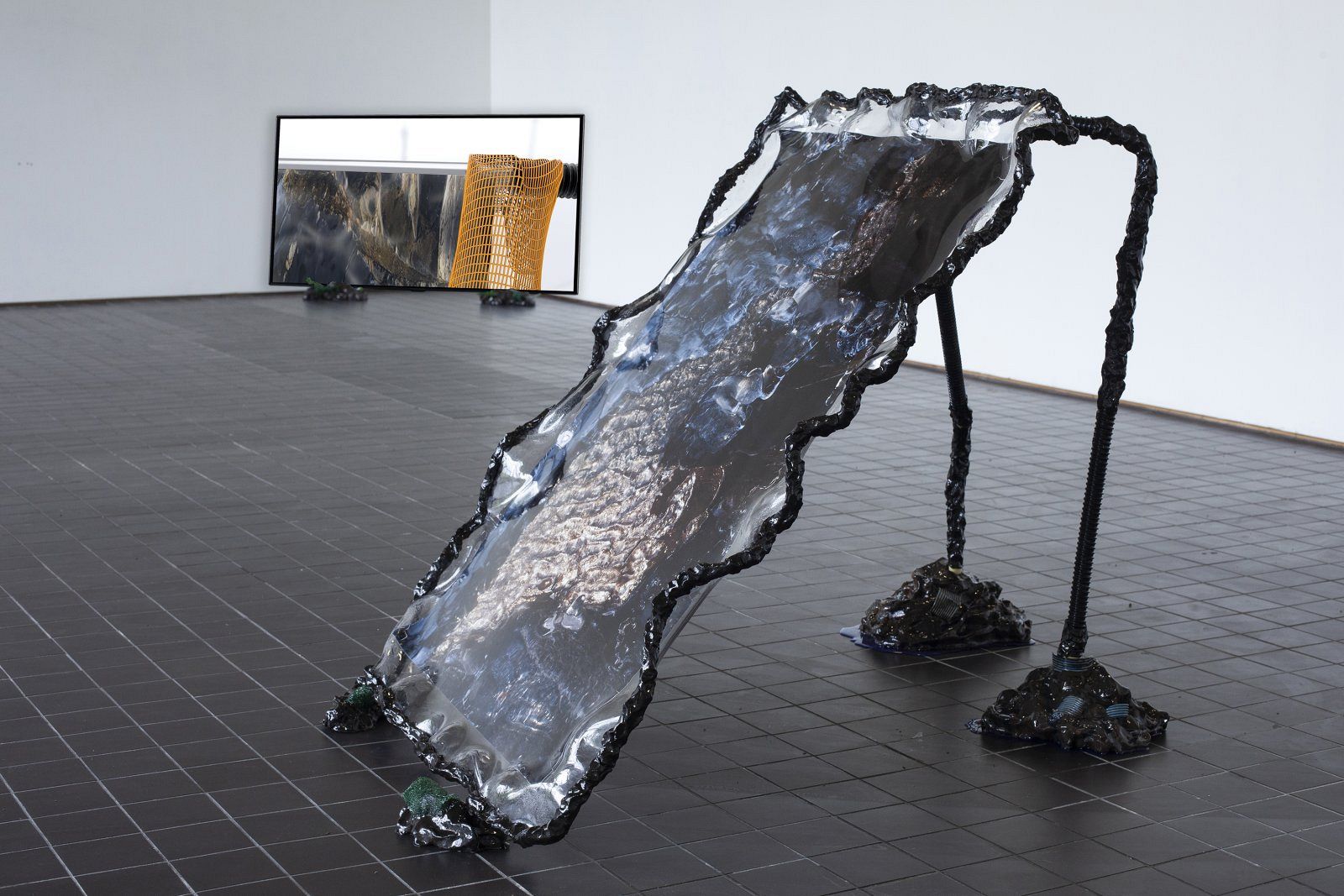
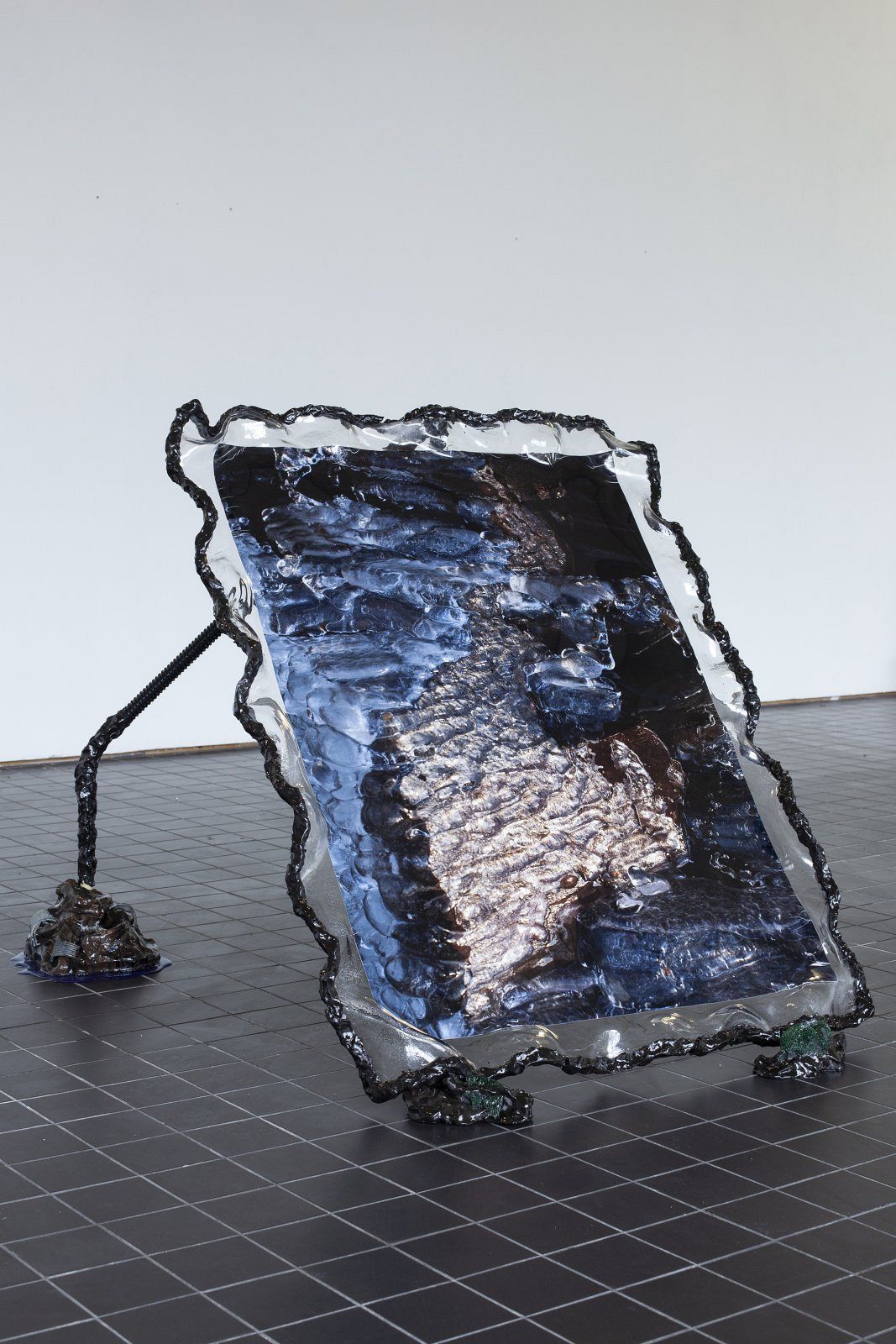

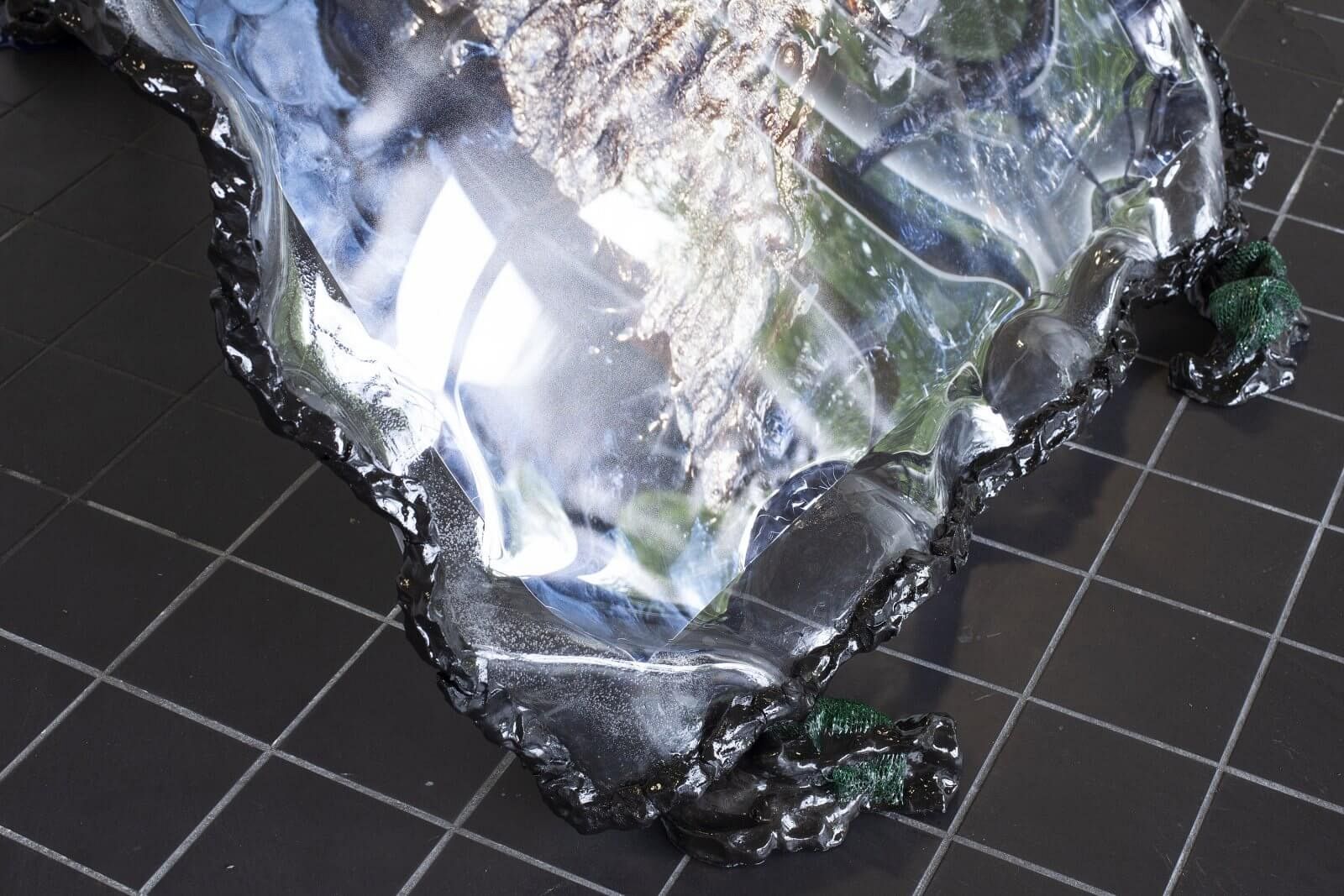
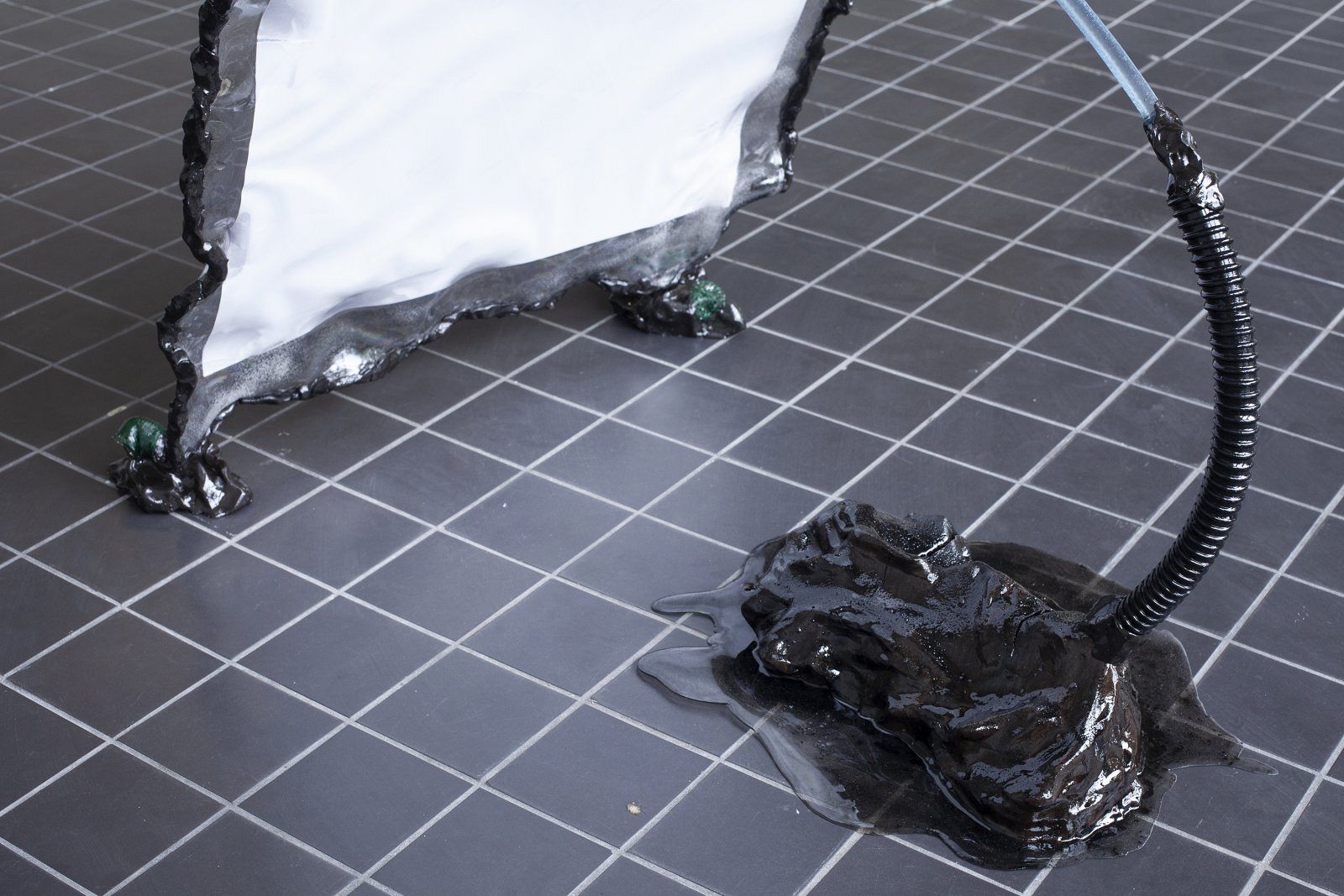
THESIS
As It Came Out of The Earth, It Returns: The arrival of Future Ruins and Landscapes
Understanding that plastic does not decay, but travels through time, inspires Kert Viiart to look at plastic from an archeological point of view, and see it as part of the future archeology. This method allows him to critically explore plastic as matter and artefact rather than only waste. Future ruins can already be seen as part of archaeology, as plastic is in use to display and preserve ancient ruins in museums and in their archives. It feels like it is a boding of the upcoming future ruins. There is so much plastic used to tell the story of previous civilizations, and it can only lead us to speculate what will be the afterlife of those ancient ruins if something drastic would happen with these collections.
The dystopian narrative will come to us any day now, creating a landscape no sci-fi movie ever imagined. Plastic that will never degrade is becoming the future ruin. Maybe the future archaeology will not be of some civilization achievements, but more dystopian consequences of civilization and humankind.
By addressing and speculating around these topics, Kert Viiart has created the installation “As It Came Out of the Earth, It Returns” (2020), consisting of 7 sculptural pieces and a video with audio (5’46’’). The work revolves around the contemporary archaeological displays, the plastic-based support structures, and building materials, questioning the choice of materials in use. These hybrid sculptural objects are condensed images of both imagination and material reality, creating multiple possibilities of historical transformation. They have “traveled” through time and deformed, becoming part of the soil and gaining the value and archeological meaning.